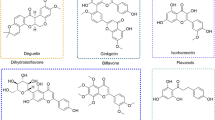Abstract
Objectives
Testicular toxicities of antimony compounds were evaluated in rats and mice. The slightly water-soluble antimony compound antimony trioxide (ATO) and the highly water-soluble antimony compound antimony potassium tartrate (APT) were examined.
Methods
Daily doses of the compounds were 27.4, 12.0 and 1,200 mg/kg body weight in the APT group, low-ATO group and high-ATO group, respectively. The corresponding daily doses of antimony were 10, 10 and 1,000 mg/kg body weight, in the APT group, low-ATO group and high-ATO group, respectively. Both compounds were administered by gavage: rats, 3 days per week for 4 weeks; mice, 5 days per week for 4 weeks.
Results
Neither compound reduced the weights of reproductive organs or accessory sex organs nor affected sperm parameters. Few marked histopathologic changes were found in the testes of the treated animals. Even at 1,200 mg/kg body weight, which is greater than the LD50 of APT, ATO produced no effects.
Conclusions
In this study, it was found that ATO and APT are not toxic to testes in rodents.
Similar content being viewed by others
References
Leonard A, Gerber GB. Mutagenicity, carcinogenicity and teratogenicity of antimony compounds. Mutat. Res. 1996; 366: 1–8.
Winship KA. Toxicity of antimony and its compounds. Adv. Drug React. Ac. Pois. Rev. 1987; 2: 67–90.
Shroeder HA, Mitchener M, Nason AP. Zirconium, niobium, antimony, vanadium and lead in rats: life term studies. J. Nutr. 1970; 100: 59–68.
Gurnani N, Sharma A, Talukder G. Cytotoxic effects of antimony trichloride on mice in vivo. Cytobios. 1992; 70: 131–136.
Gurnani N, Sharma A, Talukder G. Comparison of the clastogenic effects of antimony trioxide on mice in vivo following acute and chronic exposure. BioMetals 1992; 5: 47–50.
Gurnani N, Sharma A, Talukder G. Comparison of clastogenic effects of antimony and bismuth as trioxides on mice in vivo. Biol. Trace Element Res. 1993; 37: 281–292.
El Nahas S, Temtamy SA, de Hondt HA. Cytogenetic effects of two antimonial antibilharzial drugs: tartar emetic and bilharcid. Environ. Mutag. 1982; 4: 83–91.
Sjöblom T, Parvinen M, Lähdetie J. Stage-specific DNA synthesis of rat spermatogenesis as an indicator of genotoxic effects of vinblastine, mitomycin C and ionizing radiation on rat spermatogonia and spermatocytes. Mutat. Res. 1995; 331: 181–190.
Adler ID. Spermatogenesis and mutagenicity of environmental hazards: extrapolation of genetic risk from mouse to man. Andrologia 2000; 32: 233–237.
Russell LD, Ettlin RA, Sinha-Hikim AP, Clegg ED. Histological and Histopathological Evaluation of the Testis. Clearwater: Cache River Press, 1990.
Amann RP. Use of animal models for detecting specific alterations in reproduction. Fundam. Appl. Toxicol. 1982; 2: 13–26.
Takayama S, Akaike M, Kawashima K, Takahashi M, Kurokawa Y. Studies on the optimal treatment period and parameters for detection of male fertility disorder in rats. J. Toxicol. Sci. 1995; 20: 173–182.
Creasy DM. Evaluation of testicular toxicity in safety evaluation studies: The appropriate use of spermatogenic staging. Toxicol. Pathol. 1997; 25: 119–131.
Omura M, Masuda Y, Hirata M, Tanaka A, Makita Y, Ogata R, Inoue N. Onset of spermatogenesis is accelerated by gestational administration of 1,2,3,4,6,7-hexachlorinated naphthalene in male rat offspring. Environ. Health Perspect. 2000; 108: 539–544.
Mangal PC, Sohal, JS. Trace element analysis of rat tissues by neutron activation technique without chemical separation. Indian J. Exp. Biol. 1978; 16: 685–688.
Cristensen HE, Fairchild EJ. Registry of Toxic Effects of Chemical Substances 1976 edition. Rockville: U.S. Department of Health, Education, and Welfare. 1976.
Hirata M, Tanaka A, Omura M, Ogata R, Makita Y, Inoue N. Tissue distribution of antimony in rats and mice following multiple oral administrations of antimony trioxide and antimony potassium tartrate. Biomed. Res. Trace Elements (in press).
Robb GW, Amann RP, Killian GJ. Daily sperm production and epididymal sperm reserves of pubertal and adult rats. J. Reprod. Fertil. 1978; 54: 103–107.
Chapin RE, Gulati DK, Barnes LH, Teague JK. The effects of feed restriction on reproductive function of Sprague-Dawley rats. Fundam. Appl. Toxicol. 1993; 20: 23–29.
O'Connor JC, Davis LG, Frame SR, Cook JC. Evaluation of a tier 1 screening battery for detecting endocrine-active compounds (EACs) using the positive controls testosterone, coumestrol, progesterone, and RU486. Toxicol. Sci. 2000; 54: 338–354.
Author information
Authors and Affiliations
Rights and permissions
About this article
Cite this article
Omura, M., Tanaka, A., Hirata, M. et al. Testicular toxicity evaluation of two antimony compounds, antimony trioxide and antimony potassium tartrate, in rats and mice. Environ Health Prev Med 7, 15–18 (2002). https://doi.org/10.1007/BF02898061
Received:
Accepted:
Issue Date:
DOI: https://doi.org/10.1007/BF02898061




